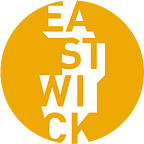The Customer Journey: Unlocking the True Value Of Content Through Personal Experiences
By Bettina Papirio
The average person encounters roughly 285 pieces of content daily; served with a side of more branded content. Content is the currency with which to grab customer attention and loyalty; content is king. Indeed, a 2016 study by the Content Marketing Institute shows that 88% of B2B marketers use content as part of their marketing strategy. I am not here to tell you that those marketers are wrong; that content is less important than you think in grabbing your customers’ attention.
Yet, all this conversation about content has created a sense of urgency in brands to act — and act they do; often without a clear vision and concrete content marketing strategy (note that only 32% of the marketers CMI surveyed have a documented strategy).
YOU DON’T KNOW WHERE YOU ARE GOING IF YOU DON’T KNOW WHERE YOU ARE
I am here to tell you, that creating content on all platforms for the sake of content puts the cart before the horse. It focuses on creating, distributing and sharing content. It focuses attention on top of the funnel– lead generation and sales. It frames the brand-customer relationship from the brand’s point of view, aiming to funnel potential customers to a transaction. It creates a content and channel centricity that neglects customers’ holistic experience with the brand.
WALKING A MILE IN YOUR CUSTOMERS’ SHOES
Content and channel should be functions of value creation, and at the center should be your customer. To achieve true customer-centricity the customer-brand relationship needs to focus on the customer’s point of view, move beyond single transactions, and establish a relationship that fosters ongoing conversation.
AT THE HEART OF CONTENT MARKETING IS CUSTOMER EXPERIENCE
The cornerstone of customer-centricity and the first step in defining successful content marketing is understanding the customer experience and decision-making journey that underlies the customer-brand relationship. The customer entry points to this relationship are manifold today with disparate locations, different situations, many channels and conversations building an interaction architecture that is driven by context, intentions, emotions and micro-moments of truth. As such, customers choose products and services based on the quality of the entire experience, not just an isolated part. And to prevent those experiences from breaking down and causing frustration and confusion in customers, it is important to navigate this complexity with a map.
The central function of the customer journey map is to help your brand relate to your customers’ experience. It explores what your customers think, see, feel, hear, and do; it illuminates behavior, preferences and needs throughout the entire customer experience cycle, guiding your brand how to engage content continuously to shape the experience.
Four phases make up the fundamental process of customer journey mapping:
• Uncover the journey
• Map the experience
• Chart the content
• Tell the story
In the end, you will have a storyboard that understands the actions, motivations, questions and barriers customers experience, and a brand in full support of the customer through every step of their decision-making process. Your content will connect the dots between customer, business, brand, and benefits. Instead of content being king, the customer is king, which will make your content effective and a true currency for your brand.
Want to find out how Eastwick Digital Brand Lab can help you connect the dots and develop a content based on solid intelligence?
Contact me at Bettina@eastwick.com or email dbl@eastwick.com.
